Developing an Approximation of a Natural, Rough Gravel Riverbed Both Physically and Numerically
Abstract
:1. Introduction
2. Materials and Methods
2.1. Artificial Gravel Riverbed Design Concept
2.2. Physical Model Manufacturing
2.3. Numerical Model Development
3. Results and Discussion
3.1. Porosity Calculation
3.2. Roughness Characterization
4. Conclusions
- The porosity of the artificial riverbed was calculated as 31.5%, which compares well with the values found in the literature for natural gravel-bed surfaces. Combined with a void ratio of 0.46, which although at the extreme end due to the lack of smaller particles, is within the maximum and minimum range for typical gravels. Thus, the artificial riverbed’s pore matrix is comparable to that of a natural gravel riverbed.
- The standard deviation of the artificial riverbed’s surface elevations was found to be 3.81 mm. This suggests that the variance in particle diameter in the artificial riverbed is less than that found in natural rivers, yet larger than that used by studies found in the literature.
- The skewness and kurtosis of the artificial riverbed were calculated as –0.176 and –1.012, respectively. The skewness result suggests that the surface elevations of the artificial riverbed are normally distributed, which was confirmed by a cumulative probability distribution plot of the riverbed’s surface elevations. The negative and relatively large kurtosis relates to the lack of variance in the particle diameters used in the artificial riverbed, and thus, the lack of irregularities in the surface elevations.
- A power spectral density function was applied to the surface elevations, giving a Hurst exponent of 2.94. Thus, the artificial riverbed cannot be considered as fractal at any scale. Also, the artificial riverbed exhibits a degree of roughness that was much lower than that found in nature, meaning the hydraulic resistance and friction factor will, as a result, be lower than desired.
Author Contributions
Funding
Acknowledgments
Conflicts of Interest
References
- Aberle, J. Measurements of armor layer roughness geometry function and porosity. Acta Geophys. 2007, 55, 23–32. [Google Scholar] [CrossRef]
- Nield, D.A.; Bejan, A. Convection in Porous Media, 5th ed.; Springer: New York, NY, USA, 2017. [Google Scholar]
- Stoesser, T. Physically Realistic Roughness Closure Scheme to Simulate Turbulent Channel Flow over Rough Beds within the Framework of LES. J. Hydraul. Eng. 2010, 136, 812–819. [Google Scholar] [CrossRef] [Green Version]
- Blois, G.; Sambrook Smith, G.H.; Best, J.L.; Hardy, R.J.; Lead, J.R. Quantifying the dynamics of flow within a permeable bed using time-resolved endoscopic particle imaging velocimetry (EPIV). Exp. Fluids 2012, 53, 51–76. [Google Scholar] [CrossRef]
- Stewart, M.T.; Cameron, S.M.; Nikora, V.I.; Zampiron, A.; Marusic, I. Hydraulic resistance in open-channel flows over self-affine rough beds. J. Hydraul. Res. 2018. [Google Scholar] [CrossRef]
- Aberle, J.; Nikora, V. Statistical properties of armored gravel bed surfaces. Water Resour. Res. 2006, 42. [Google Scholar] [CrossRef] [Green Version]
- Anderson, W.; Meneveau, C. Dynamic roughness model for large-eddy simulation of turbulent flow over multiscale, fractal-like rough surfaces. J. Fluid Mech. 2011, 679, 288–314. [Google Scholar] [CrossRef]
- Barros, J.M.; Schultz, M.P.; Flack, K.A. Measurements of skin-friction of systematically generated surface roughness. Int. J. Heat Fluid Flow 2018, 72, 1–7. [Google Scholar] [CrossRef]
- Dark, A.L. Numerical Modelling of Groundwater–Surface Water Interactions with the Double-Averaged Navier-Stokes Equations. Ph.D. Thesis, University of Canterbury, Christchurch, New Zealand, 2017. [Google Scholar]
- Nassrullah, S.; (Cardiff University, Cardiff, UK); Stoesser, T.; (University College London, London, UK). Personal communication, 2018.
- Goharzadeh, A.; Khalili, A.; Jorgensen, B.B. Transition layer thickness at a fluid-porous interface. Phys. Fluids 2005, 17. [Google Scholar] [CrossRef]
- Panah, M.; Blanchette, F. Simulating flow over and through porous media with application to erosion of particulate deposits. Comput. Fluids 2018, 166, 9–23. [Google Scholar] [CrossRef]
- Goyeau, B.; Lhuillier, D.; Gobin, D.; Velarde, M.G. Momentum transport at a fluid-porous interface. Int. J. Heat Mass Transfer 2003, 46, 4071–4081. [Google Scholar] [CrossRef]
- Khalili, A.; Basu, A.J.; Pietrzyk, U.; Raffel, M. An experimental study of recirculating flow through fluid-sediment interfaces. J. Fluid Mech. 1999, 383, 229–247. [Google Scholar] [CrossRef]
- Pokrajac, D.; Manes, C. Velocity Measurements of a Free-Surface Turbulent Flow Penetrating a Porous Medium Composed of Uniform-Size Spheres. Transp. Porous Med. 2009, 78, 367–383. [Google Scholar] [CrossRef]
- Morad, M.R.; Khalili, A. Transition layer thickness in a fluid-porous medium of multi-sized spherical beads. Exp. Fluids 2009, 46, 323–330. [Google Scholar] [CrossRef]
- Valyrakis, M.; Diplas, P.; Dancey, C.L. Entrainment of coarse particles in turbulent flows: An energy approach. J. Geophys. Res. Earth Surf. 2013, 118, 42–53. [Google Scholar] [CrossRef] [Green Version]
- Stoesser, T. Coherent flow structures: Driving Mechanism for Hyporheic Exchange over Permeable Beds? In Proceedings of the International Conference on Fluvial Hydraulics, Cesme, Turkey, 3–7 September 2008; pp. 3–5. [Google Scholar]
- Geuzaine, C.; Remacle, J.F. Gmsh: A Three-Dimensional Finite Element Mesh Generator with Built-In Pre- and Post-Processing Facilities. Int. J. Numer. Meth. Eng. 2009, 79, 1309–1331. [Google Scholar] [CrossRef]
- Ouro, P.O.; Stoesser, T. An immersed boundary-based large-eddy simulation approach to predict the performance of vertical axis tidal turbines. Comput. Fluids 2017, 152, 74–87. [Google Scholar] [CrossRef] [Green Version]
- Das, B.M. Advance Soil Mechanics, 3rd ed.; Taylor and Francis: Abingdon, UK, 2008. [Google Scholar]
- Spiegel, M.R.; Stephens, L.J. Theory and Problems of STATISTICS, 3rd ed.; McGraw-Hill: New York, NY, USA, 1999. [Google Scholar]
- Nikora, V.; Goring, D.; McEwan, I.; Griffiths, G. Spatially Averaged Open-Channel Flow Over Rough Bed. J. Hydraul. Eng. 2001, 127, 123–133. [Google Scholar] [CrossRef]
- Persson, B.N.J.; Albohr, O.; Tartaglino, U.; Volokitin, A.I.; Tosatti, E. On the nature of surface roughness with application to contact mechanics, sealing, rubber friction and adhesion. J. Phys. Condens. Matter 2005, 17, 1–62. [Google Scholar] [CrossRef] [PubMed]
- Kanafi, M.M. 1-Dimensional surface roughness power spectrum of a profile or topography. 2016. Available online: https://uk.mathworks.com/matlabcentral/fileexchange/54315-1-dimensional-surface-roughness-power-spectrum-of-a-profile-or-topography?s_tid=prof_contriblnk (accessed on 30 November 2018).
- Nikora, V.; Goring, D.G.; Biggs, B.J.F. On gravel-bed roughness characterization. Water Resour. Res. 1998, 34, 517–527. [Google Scholar] [CrossRef] [Green Version]


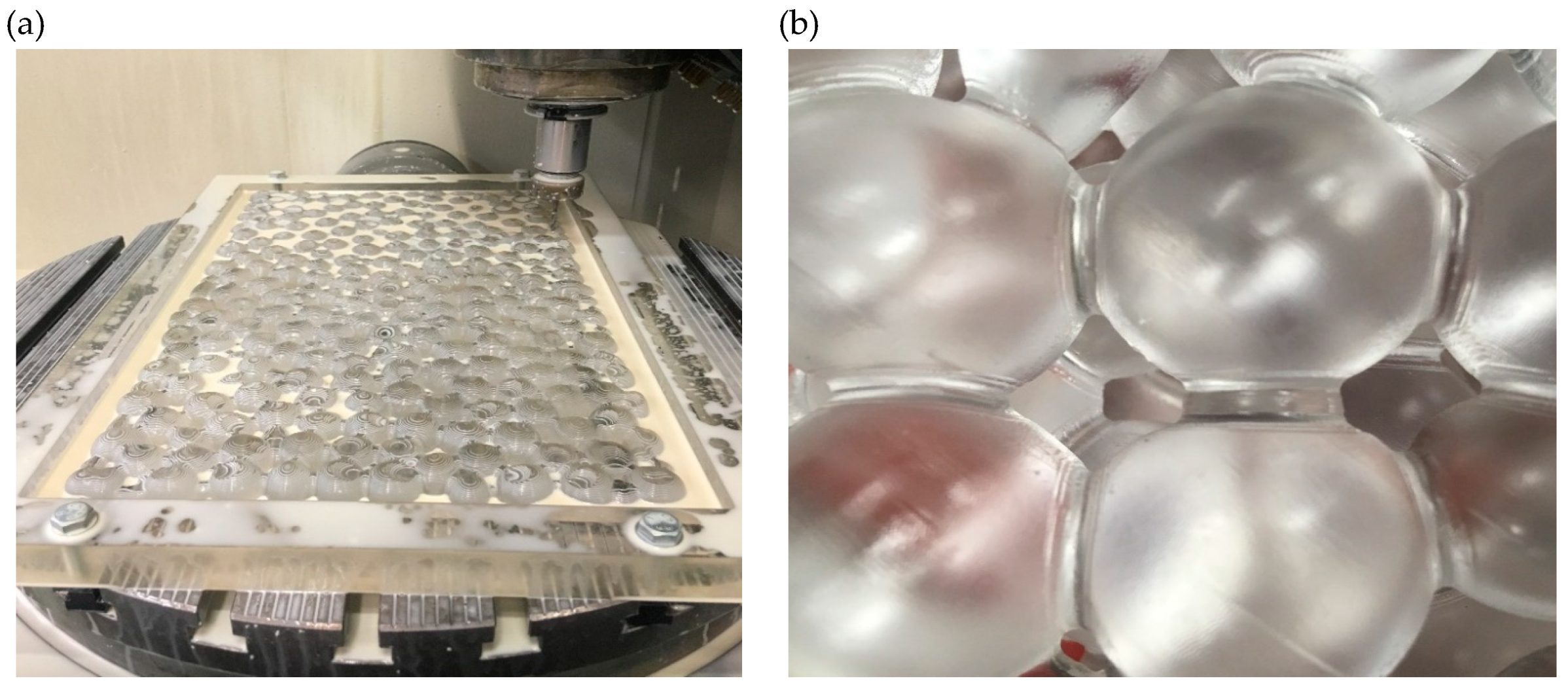
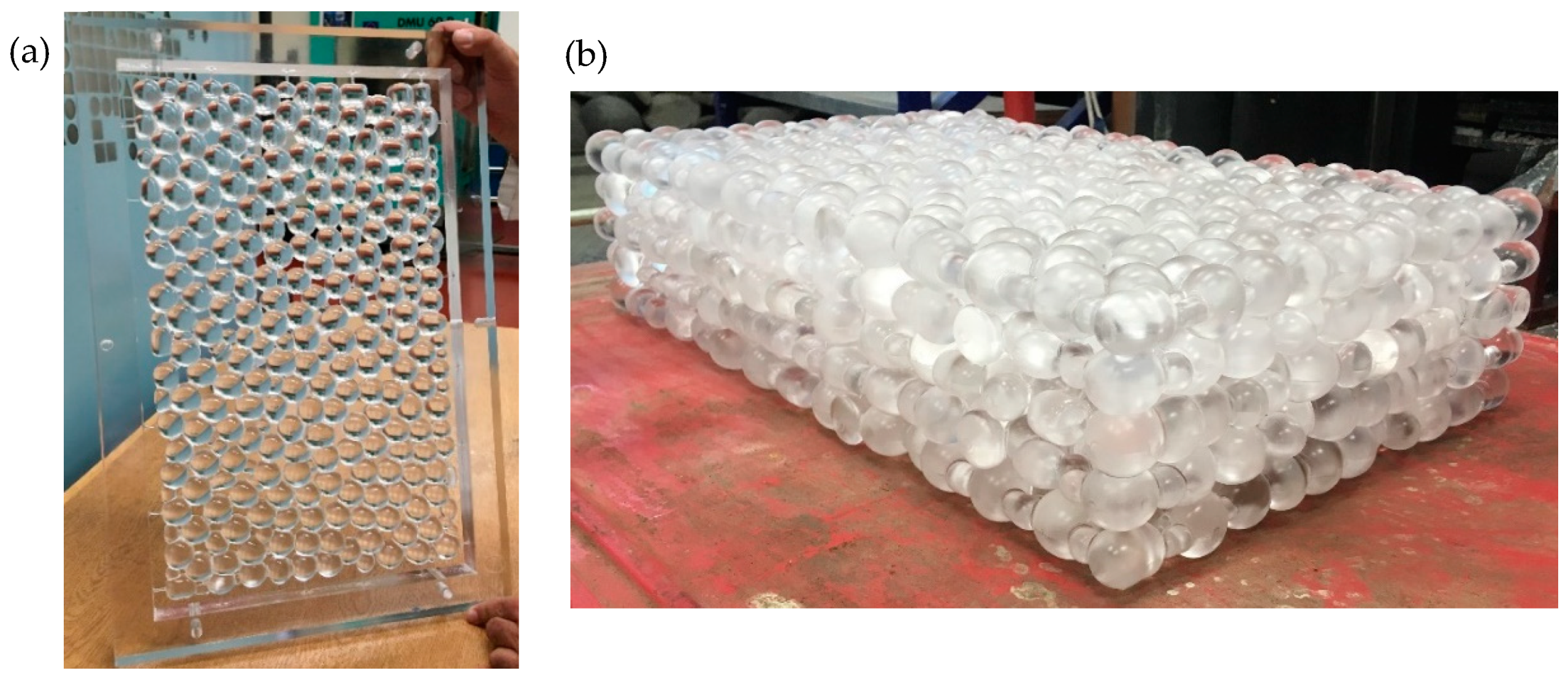
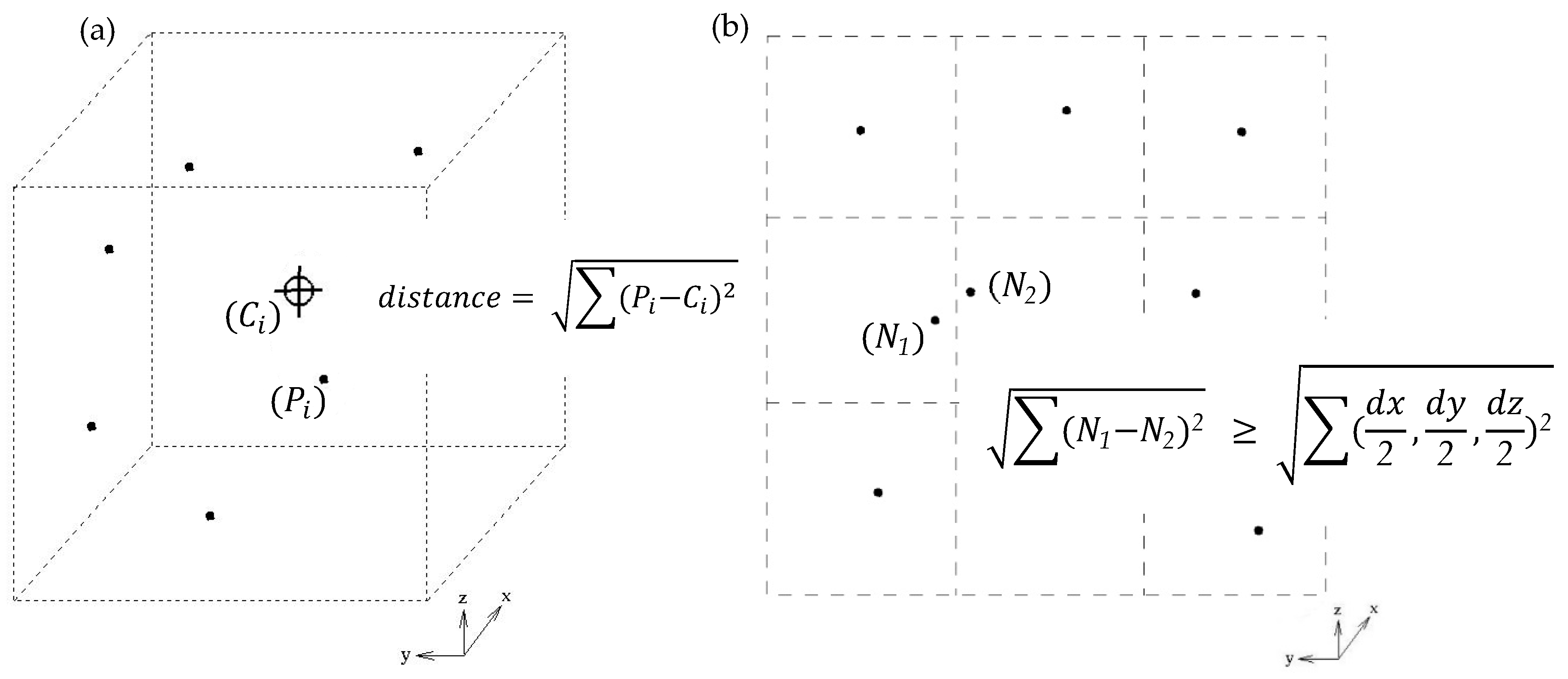
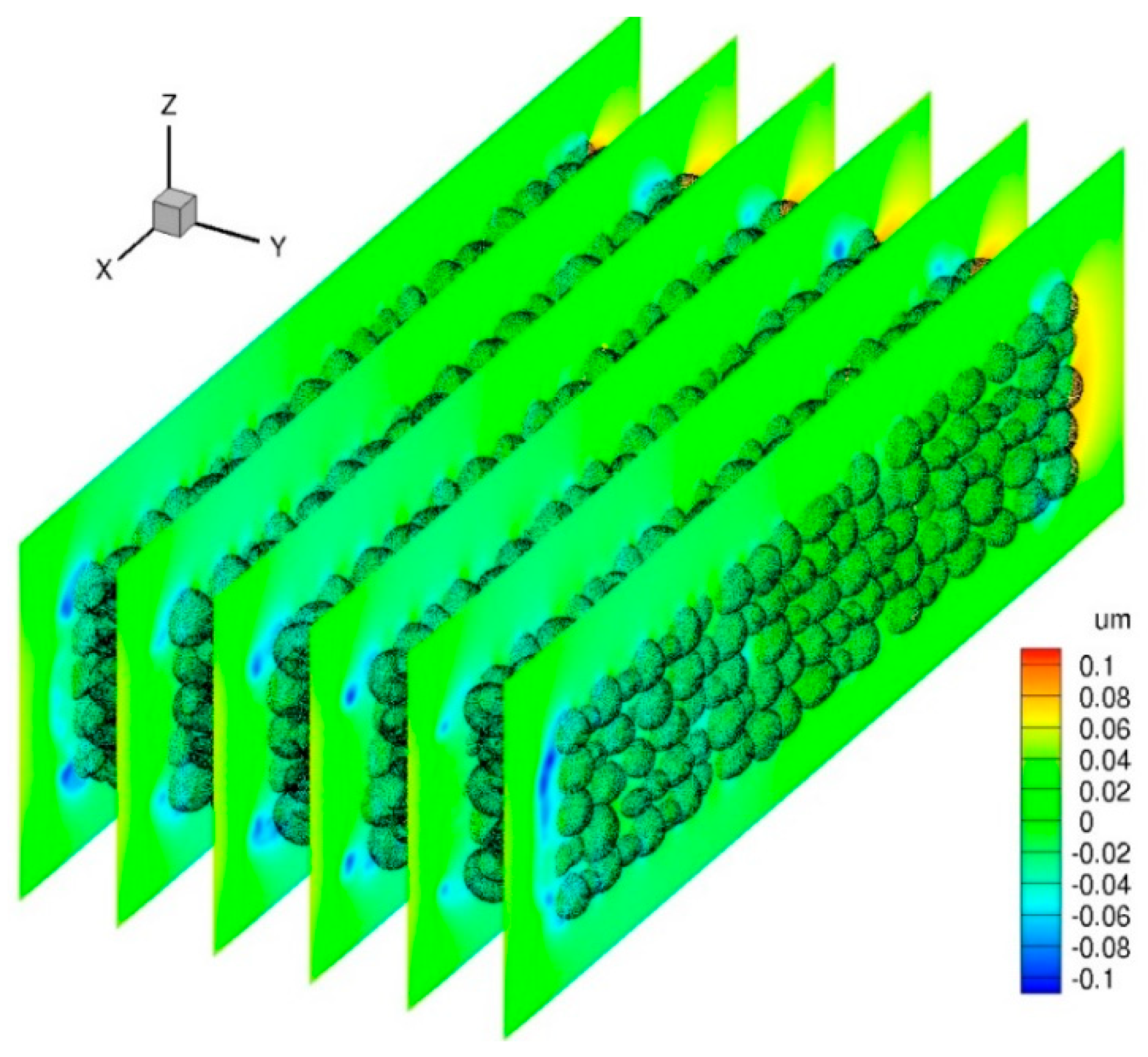

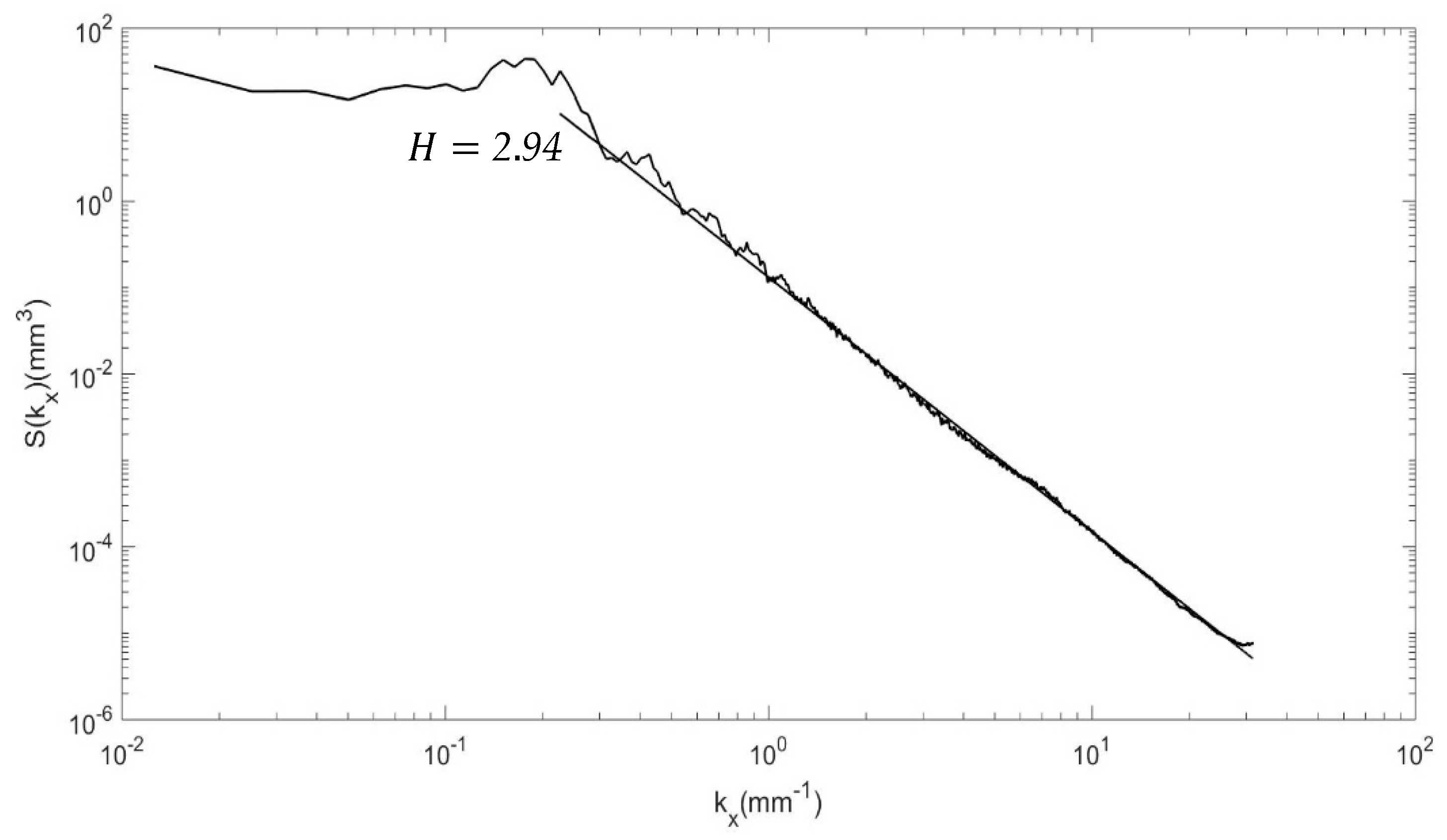
| (a) Layer Orientation Details | (b) Assembly Orientation Details | ||
|---|---|---|---|
| Layer Number | 180° Rotation about Axis Relative to Layer 1 | Assembly Number | 180° Rotation about Axis Relative to Assembly 1 |
| 1 | None - bottom | 1 | None |
| 2 | y | 2 | y |
| 3 | z | 3 | None |
| 4 | x | 4 | y |
| 5 | None-top | ||
| Roughness Material | |||
|---|---|---|---|
| Cast acrylic artificial gravel riverbed, 28-mm diameter | 3.81 * | −0.176 (±0.004) | −1.012 (±0.008) |
| 35-mm diameter gravel [10] | 6.06 (5.50,6.77) | 0.19 (±0.18) | −0.72 (±0.37) |
| 20-mm diameter gravel [10] | 7.83 (7.28,8.48) | −0.59 (±0.13) | −0.30 (±0.27) |
| Epoxy resin artificial roughness plates, R3 design [5] | 1.58 (1.46,1.72) | −0.11 (±0.14) | 0.18 (±0.28) |
© 2018 by the authors. Licensee MDPI, Basel, Switzerland. This article is an open access article distributed under the terms and conditions of the Creative Commons Attribution (CC BY) license (http://creativecommons.org/licenses/by/4.0/).
Share and Cite
Stubbs, A.; Stoesser, T.; Bockelmann-Evans, B. Developing an Approximation of a Natural, Rough Gravel Riverbed Both Physically and Numerically. Geosciences 2018, 8, 449. https://doi.org/10.3390/geosciences8120449
Stubbs A, Stoesser T, Bockelmann-Evans B. Developing an Approximation of a Natural, Rough Gravel Riverbed Both Physically and Numerically. Geosciences. 2018; 8(12):449. https://doi.org/10.3390/geosciences8120449
Chicago/Turabian StyleStubbs, Alex, Thorsten Stoesser, and Bettina Bockelmann-Evans. 2018. "Developing an Approximation of a Natural, Rough Gravel Riverbed Both Physically and Numerically" Geosciences 8, no. 12: 449. https://doi.org/10.3390/geosciences8120449





